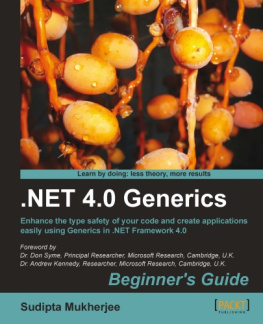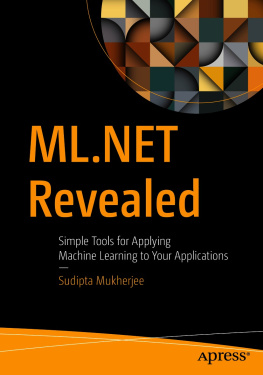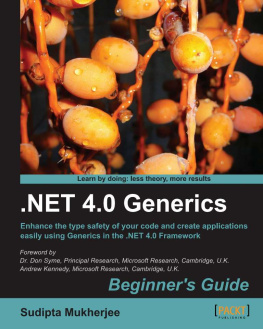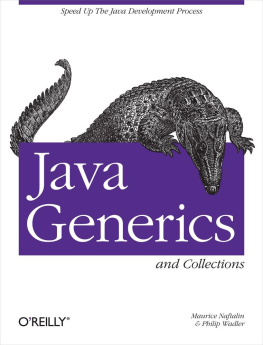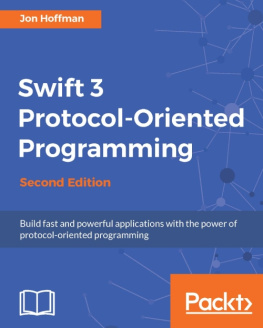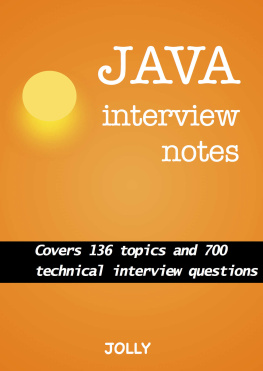Sudipta Mukherjee - .NET Generics 4.0 Beginners Guide
Here you can read online Sudipta Mukherjee - .NET Generics 4.0 Beginners Guide full text of the book (entire story) in english for free. Download pdf and epub, get meaning, cover and reviews about this ebook. year: 2012, publisher: Packt Publishing, genre: Home and family. Description of the work, (preface) as well as reviews are available. Best literature library LitArk.com created for fans of good reading and offers a wide selection of genres:
Romance novel
Science fiction
Adventure
Detective
Science
History
Home and family
Prose
Art
Politics
Computer
Non-fiction
Religion
Business
Children
Humor
Choose a favorite category and find really read worthwhile books. Enjoy immersion in the world of imagination, feel the emotions of the characters or learn something new for yourself, make an fascinating discovery.
- Book:.NET Generics 4.0 Beginners Guide
- Author:
- Publisher:Packt Publishing
- Genre:
- Year:2012
- Rating:5 / 5
- Favourites:Add to favourites
- Your mark:
.NET Generics 4.0 Beginners Guide: summary, description and annotation
We offer to read an annotation, description, summary or preface (depends on what the author of the book ".NET Generics 4.0 Beginners Guide" wrote himself). If you haven't found the necessary information about the book — write in the comments, we will try to find it.
Enhance the type safety of your code and easily create applications using .Net Generics 4.0
- Learn how to use Generics methods and generic collections to solve complicated problems.
- Develop real-world applications using Generics
- Know the importance of each generic collection and Generic class and use them as per your requirements
- Benchmark the performance of all Generic collections
In Detail
Generics were added as part of .NET Framework 2.0 in November 2005. Although similar to generics in Java, .NET generics do not apply type erasure but every object has unique representation at run-time. There is no performance hit from runtime casts and boxing conversions, which are normally expensive..NET offers type-safe versions of every classical data structure and some hybrid ones.
This book will show you everything you need to start writing type-safe applications using generic data structures available in Generics API. You will also see how you can use several collections for each task you perform. This book is full of practical examples, interesting applications, and comparisons between Generics and more traditional approaches. Finally, each container is bench marked on the basis of performance for a given task, so you know which one to use and when.
This book first covers the fundamental concepts such as type safety, Generic Methods, and Generic Containers. As the book progresses, you will learn how to join several generic containers to achieve your goals and query them efficiently using Linq. There are short exercises in every chapter to boost your knowledge.
The book also teaches you some best practices, and several patterns that are commonly available in generic code.
Some important generic algorithm definitions are present in Power Collection (an API created by Wintellect Inc.) that are missing from .NET framework. This book shows you how to use such algorithms seamlessly with other generic containers.
The book also discusses C5 collections. Java Programmers will find themselves at home with this API. This is the closest to JCF. Some very interesting problems are solved using generic containers from .NET framework, C5, and PowerCollection Algorithms a clone of Google Set and Gender Genie for example!
Sudipta Mukherjee: author's other books
Who wrote .NET Generics 4.0 Beginners Guide? Find out the surname, the name of the author of the book and a list of all author's works by series.

